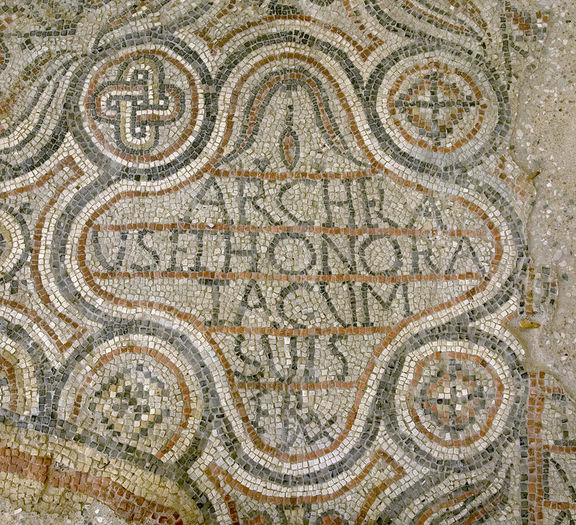Difference between revisions of "Roman Emona"
(imported from XML by extractor/importer) |
m (Text replace - "{{Abstract" to "{{Teaser") |
||
| Line 22: | Line 22: | ||
}} | }} | ||
| − | {{ | + | {{Teaser| |
The Romans built their first military encampment on the territory of the present Ljubljana in around the year 50 BCE. This was later followed by the establishment of a permanent settlement called Iulia Aemona (Emona). As a strategic stronghold playing an important role in numerous wars, Emona was fortified with strong walls. It had a population of 5,000 to 6,000 people, mostly merchants and craftsmen, including a number of government officials and war veterans. Its streets were paved and its houses were brick built, centrally heated and connected to a public sewage system. Their walls were plastered and painted in different colours, and their floors covered in mosaics. Emona was, among other things, an important early Christian centre with a flourishing trade. It had its own goddess, Equrna, worshipped at the Ljubljana Marshes. From the 4th century CE Emona fell into a decline along with the Western Roman Empire. | The Romans built their first military encampment on the territory of the present Ljubljana in around the year 50 BCE. This was later followed by the establishment of a permanent settlement called Iulia Aemona (Emona). As a strategic stronghold playing an important role in numerous wars, Emona was fortified with strong walls. It had a population of 5,000 to 6,000 people, mostly merchants and craftsmen, including a number of government officials and war veterans. Its streets were paved and its houses were brick built, centrally heated and connected to a public sewage system. Their walls were plastered and painted in different colours, and their floors covered in mosaics. Emona was, among other things, an important early Christian centre with a flourishing trade. It had its own goddess, Equrna, worshipped at the Ljubljana Marshes. From the 4th century CE Emona fell into a decline along with the Western Roman Empire. | ||
}} | }} | ||
Revision as of 22:04, 27 November 2009
The relics of Roman Emona may be found in three main areas of Ljubljana. The archaeological site at Jakopičev gardens contain the foundations of an Emona house (part of an insula) with mosaics and the remains of floor heating, part of a street and a section of the town sewage system. A section of the old Roman city walls, renovated by architect Jože Plečnik, may be seen in Mirje district. And the remains of a baptistry with a pool, mosaics and part a portico may be seen at Erjavčeva 18, next to Cankarjev dom Culture and Congress Centre and Majda Vrhovnik Primary School.



